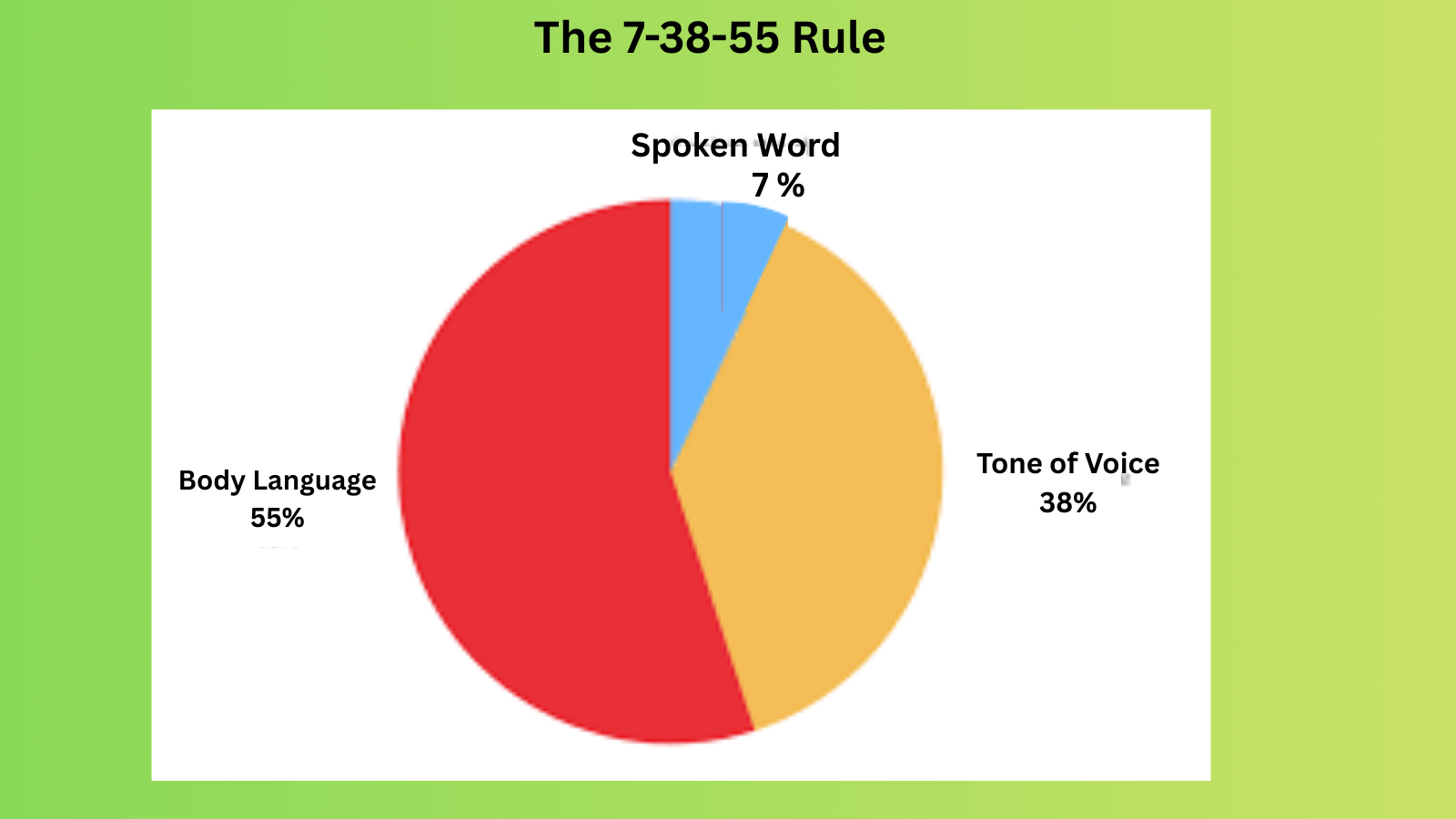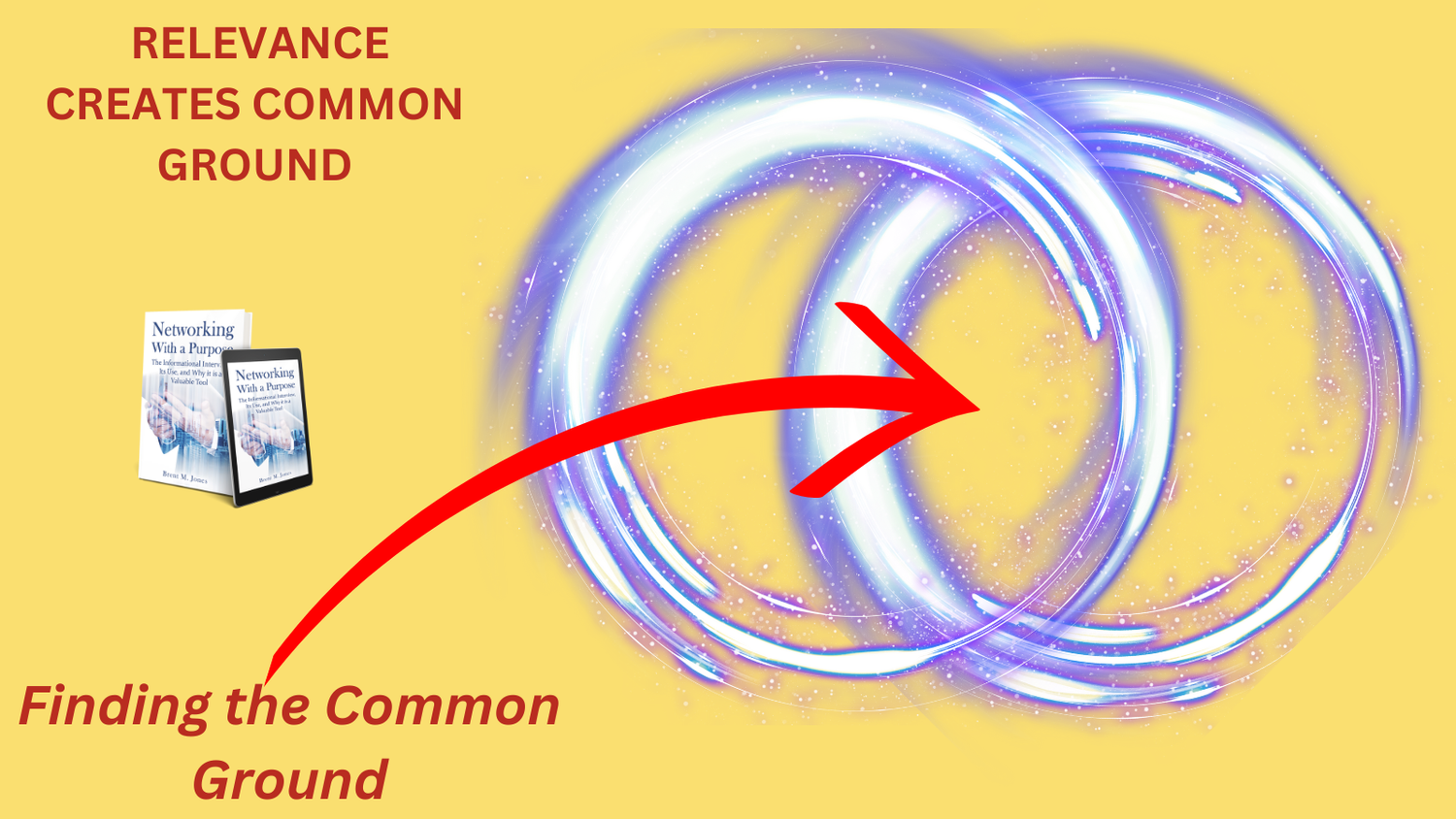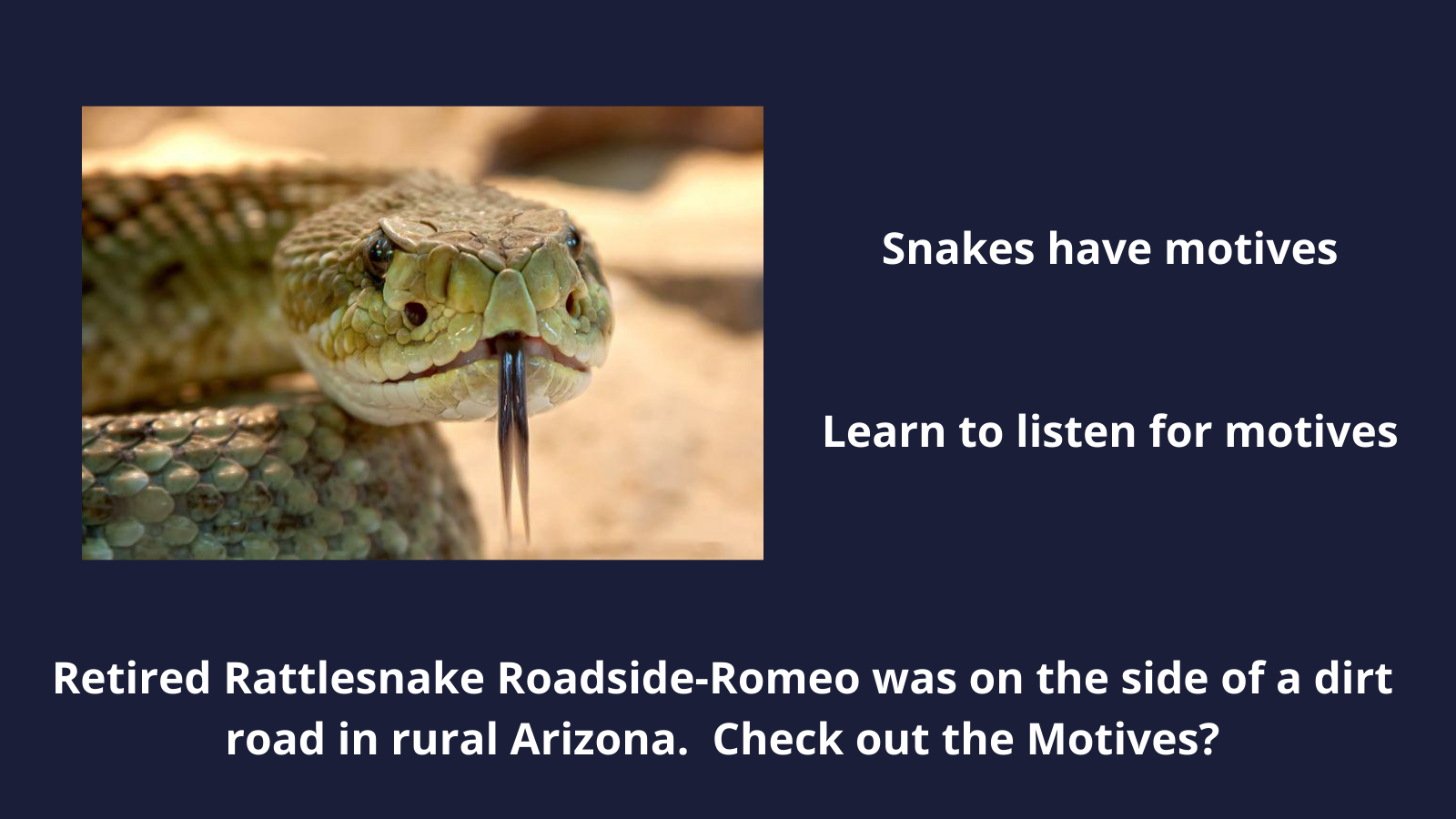Tone of Voice and the 7-38-55 Rule of Communication
In communication, words matter less than we think. According to the 7-38-55 Rule, only 7% of meaning comes from words—while tone and body language carry the rest.
Read moreWhy Effective Communication is an Art Not a Science →
Communication requires an individual to understand the unique circumstances of the person or audience they are communicating with and adapt their style accordingly. These unique circumstances could include cultural differences, language barriers, or individual preferences.
Often described as an art, communication necessitates using personal skills and knowledge. These skills empower individuals to solve complex problems and achieve objectives. Like any art form, communication is deeply personal, with each speaker or professional bringing their unique skills and knowledge to the table.
What Determines Relevance and How Important is it to Communication? →
Understanding the difference between importance and relevance is a key step in this exploration. It's important to note that while importance is author-defined, relevance is something that readers actively assign to information based on their needs and interests.
This could suggest that a good starting point for an author is to determine if the planned thoughts are essential to the intended reader. In addition, it validates the idea that the customer is always right because it is the customer who, like the reader, assigns the relevance to the product.
When something is "relevant," it matters. Its relevance is clear. Relevance is simply the noun form of the adjective "relevant," which means "important to the matter at hand." Artists and politicians are always worried about their relevance.
So, what does it mean when a book is relevant? In the context of a novel, relevance is a truth that always holds, even if we didn't see it before. When a novel is relevant, it's like a snap! We suddenly feel a connection to our lives or the world around us. This is the power and purpose of relevance.
Relevance considers the information's importance to your research needs. To determine relevance, the purpose and bias must be understood, and all aspects of evaluation must be considered.
People Can Learn to Be Charismatic →
Is Charisma a Skill or a Trait?
Charisma is a learnable skill. It is the type of skill that, once it is learned, it is considered a personality trait. Sometimes, this skill helps define the person who has it and might be thought of as a trait of that person.
A charismatic personality can persuade others because they come across as trustworthy, friendly, and fully present. Charismatic people demonstrate warmth and competence by playing to their strengths in any social situation.
The truth is that charisma is a learned behavior, a skill to be developed in the same way that we learn to walk or practice vocabulary when studying a new language.
A variety of factors can make a person charismatic. They include but are not limited to, confidence, exuberance, optimism, expressive body language, and a passionate voice. People with charisma are often enthusiastic and speak with assertiveness.
This is a skill that needs to be in the right balance. Highly charismatic people have the perfect balance of two traits: warmth and competence. Charismatic individuals can project both a sense of genuine warmth, trustworthiness, and friendliness, as well as a sense of confidence and competence in their abilities.
Three Rules of Charisma
Emanate energy, conviction, and assurance. Energize everyone around you with your enthusiasm, passion, and expectations.
Sincerity and genuine interest can give eye contact posture, facial expression, and listening skills the impact that will enable you to communicate effectively without speaking. Communicating without speaking requires a form of charisma. Likewise, a charismatic person attracts influences, and inspires people through personal qualities.
5 Important Charismatic Skills
Confidence
Empathy
Self-Awareness
Passion
Quotes
“Embrace the influence of your work, and your work will be your masterpiece.” - Brent M. Jones.
"Be passionate about improving. Be passionate about helping others. Listen to your feelings.”- Brent M. Jones.
Shoes add Depth to Your Personality →
Shoes Add Depth to Your Personal Nonverbally
Your clothing is part of your nonverbal communication. Your shoes can reflect your style, mood, personality, attitude, and more. If you want to leave a strong impression, a versatile shoe collection can do the job; they add depth to your personality. You can unknowingly create a negative image of yourself with your shoes.
Dress is considered an aspect of non-verbal communication and has social significance for the audience. Dress also includes what people wear, such as jewelry, ties, handbags, hats, and glasses. Clothing conveys nonverbal clues about a speaker's personality, background, and financial status.
Fashion is a non-verbal communication representing one's political and religious beliefs, gender identity, occupation, and essence. Whether intentional or not, how you dress can send a message to others about how you view yourself and how you want to be seen.
Shoes can play an unexpected role in nonverbal communication and shoes. High heels. boots or flat, colorful sneakers can change your posture and body language. High heels can pivot your pelvis forward, resulting in your shoulders going back and your chest pushing out. This can result in a more confident and more assertive posture and an increase in your own confidence.
Colorful sneakers are thought to energize and inspire and even if others don’t see it that way your confidence may be impacted by having them.
Finding Better Communication Sources →
Successful communication can deepen relations in personal life or professional life. In personal life, they can help us better understand people and daily situations. Developing communication skills can help us avoid conflicts, compromise, and help in better decision-making.
Ways to Improve Your Communication Skills
Listen, listen, and listen. ...
Who you are talking to matters. ...
Body language matters. ...
Check your message before you hit send. ...
Be brief yet specific. ...
Write things down. ...
Sometimes it's better to pick up the phone. ...
Think before you speak
Sources to Help Improve Your Communication Skills
Connected Events Website: One of the goals of this website is to help improve communication skills with regular posts on this subject in the Content Section under Communication Skills
Brent M. Jones Author Books. See Overview Below
Brent M. Jones Video Channel with a Playlist Section on Communication Skills.
#CommunicationSkills #SelfHelpBooks, #SpeakingSkills, #ListeningSkills, #FindingBetterCommunicationSources
Effective Communication Brings People Closer Together and Helps You Understand Their Motives. →
Effective communication requires you to become an engaged listener. That means changing the usual focus of trying to listen to decide what to say next. Listening well will help you understand the words being communicated, but a person needs to learn how to understand the emotions conveyed.
When you listen, you’ll hear more than just words; you will hear the feelings in someone’s voice and understand that more than terms are being communicated and how a person feels about those words are more important.
Listening this way lets the other person know they were heard and understood. Resulting in a better connection.
What is being communicated often has nothing to do with the words, and the real intention (motive) can be a concern if known.
Snakes Have Motives
Retired Rattlesnake Roadside-Romeo was on a dirt road in rural Arizona. On the other side of the road was a chicken.
So, he hollers, "Hey there! Babe! I don't usually talk with random chicks, but you should know I am a hundred years old. Do you want to know the secret to a long life?"
The chicken is intrigued and asks, "Well, what is it? Tell me"
Roadside-Romeo replies, "What'd you say? Can't hear you."
The chicken says, "What is the secret to long life?"
Roadside-Romeo says, "What, babe? Whatcha sayin'?"
So, the curious chicken crossed the road.
And went near Roadside-Romeo's ear and yelled, "What is the secret to long life?"
Roadside-Romeo hissed and rattled and replied, "Oh!!! The secret is - Don't talk to strangers!"
And in one quick swoop, the snake pounced and swallowed the bird.
And smugly, he thought, "Amazing, I can still pick up chicks with that joke!"“Effective Communication is not just for good guys.”
The Main Thing for a Speaker is the Subject not the Style. →
It is evident that a person will learn much about a subject when it becomes a book. That was the case with my recent book, “Mastering the Art of Communication, The Power of Precision Language.” It might surprise some that even more about a book's subject matter can be learned as research and planning go into marketing the finished book.
Stephen R. Covey is considered one of the most respected authorities on leadership, having authored “The 7 Habits of Highly Effective People,” named the most influential business book of the twentieth century. When I added that fact to my personal experience with this author, his book seemed natural to consider as I looked at marketing approaches.
Covey’s core message seems to be, “The most important ingredient we put into any relationship is not what we say or do but what we are. There are plenty of books to consider as I try to find ways to bring attention to my newest books. When I felt the titles and focus of many of them, it was clear that a lot of focus is given to polishing the delivery of a message and creating a style that shows leadership and eloquence.
As I have searched for marketing ideas, I have asked myself, “How can I get the message across that mastering the art of communication isn’t accomplished with style, polish, and gimmicks but with authenticity. If the language is precise, it will reliably create honest insights. I have obviously brought Stephen R. Covey into my own marketing of my book on communication and have done so to associate the book with what I consider an honest approach to the subject. Covey said, “The main thing is to keep the main thing the main thing.” The main thing is not a person's eloquence. It is the value of the message.
Read moreImproving Your Speaking and Writing Skills by Understanding Algorithms and SEO →
This title is also the title of Chapter 9 in the book, Mastering the Art of Communication, The Power of Precision in Language. This chapter explains that learning about algorithms and SEO can provide valuable insights into improving our speaking and writing skills.
Algorithms are rules that determine how search engines like Google rank and display search results. It is like a flowchart showing what happens leading up to an event or conclusion and helps prioritise information that is most likely to get a reaction.
SEO involves optimizing a website or written content to rank higher in search engine workings and priorities. By choosing the right words we can tailor your writing and speaking to meet standards that reach and resonate with a wider audience. For instance, search engines prioritize well-structured, easy-to-read, and relevant content for users’ search queries. We can create more engaging and understandable content by applying these principles to our writing and speaking.
Additionally, algorithms consider keywords density, meta tags, and backlinks when ranking content, and can increase our chances of being discovered by search engines and reaching a wider audience. Likewise speaking can enhance clarity in the audiance by adding keywords to the content.
Understanding algorithms and SEO can also improve our verbal communication skills. These terms represent processes that seek out matches, and similar intent of words is the first step in effective verbal communication, and it is essential to understand how to research and find the right words.
This chapter has much more content. Read the book.
The Goals of What You Say and How You Say It
The goal of speaking effectively results in the intended message being heard and understood and then acted on. There are two main elements to speaking effectively:
What you say and how you say it.
What you say means your choice of words. When talking one-on-one to a friend, the words you might use will likely differ from those used in a formal presentation or interview.
How you say the words might vary with the usual way that you speak in different situations. Your normal tone and volume of your voice and your body language will likely change based on your audience or your own feelings about what you say.
Effective speaking means being able to say what you want to say so that it is heard and acted upon. To accomplish this requires considering every possible tool and aspect to ensure that nothing distracts or detracts from your message.
Whether you are talking to a major conference about a new scientific discovery, your children about their behavior, or your boss about a pay rise, you need to be able to speak effectively.
.
First Seek to Understand Why a Person Thinks Differently by Asking this Question →
Often, you are being asked to accept a viewpoint that is radically different from your own. Black is black, and white is white, but figuratively, someone will always say black is white. Why is that? Perhaps when people say things are "not always black and white," they mean that you don't know the whole situation.?
The first step when confronted with this can help make those encounters easier. Actively engage in the conversation by asking the other person what leads them to those conclusions. So why do they believe that? Try to ask in a way that shows you want to know.
You don’t have to tell them you will give up your point of view to try this approach to change your point of view, but you do need to be willing to listen and attempt to understand the other person’s reasons for their point of view.
In the book The 7 Habits of Highly Effective People, Dr. Stephen Covey presented this message in Habit 5: Seek First to Understand, Then to be Understood, adding that people form opinions based on their experiences. Through those experiences, you want to understand the other person’s point of view.
To seek to understand, you cannot have already judged a person or situation. Instead, you need to develop a deep sense of empathy, a desire to understand and to see things from others' points of view, to see their reasons, and feel what they feel. This empathy is a powerful tool for improving communication and fostering understanding.
Visual Communication is Powerful →
Hairstyle is the first thing others see when you approach. The audience mainly notices it as a speaker moves steps to the speaking arena; because hair is on the head, it is highly noticeable and combines with other facial factors to send out powerful non-spoken messages to the audience.
Cutting off one’s hair will get noticed, but it is often done for a reason. It can symbolize a rite of passage or declaration of character growth.
Adele N. Norris wrote in Black Perspectives in October 2021: “Anti-black racism presents whiteness as the normal mode of humanness and argues that it is made visible through the stigmatizing of Black hair and styles.”
Dress codes that would not mention race would ban hairstyles mainly worn by black people in the workplace.
Hair was a sacred cultural and spiritual symbol in ancient African societies. Those communities fashioned their hair for more than just style and were intended to communicate a message. Throughout the continent, a person's hairstyle could tell a lot about who they were and where they came from.
Hair is communication. It complements the desired image and is also a mode of communication in that it sends out several messages to the audience.
If you don't listen first you won't understand: Understanding follows listening →
Listening Requires a Choice





















